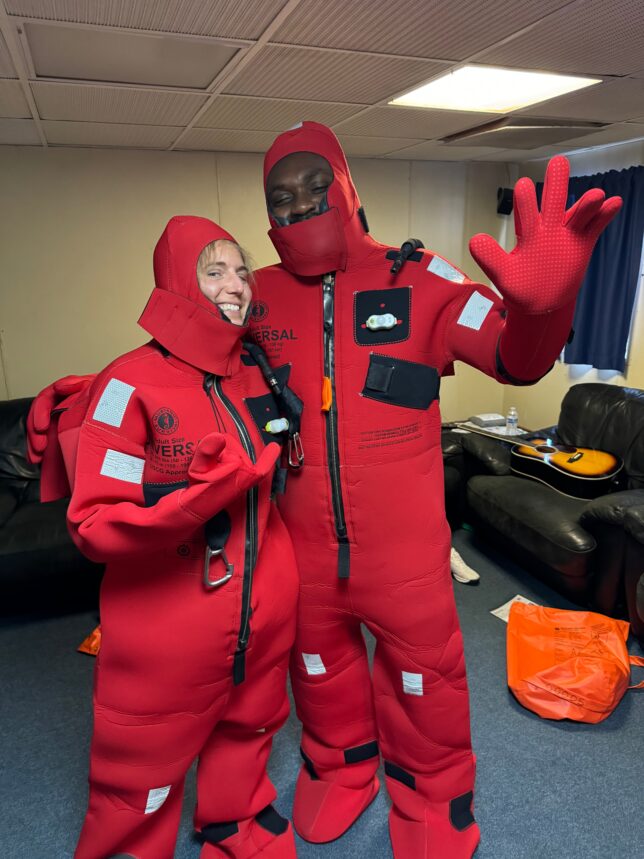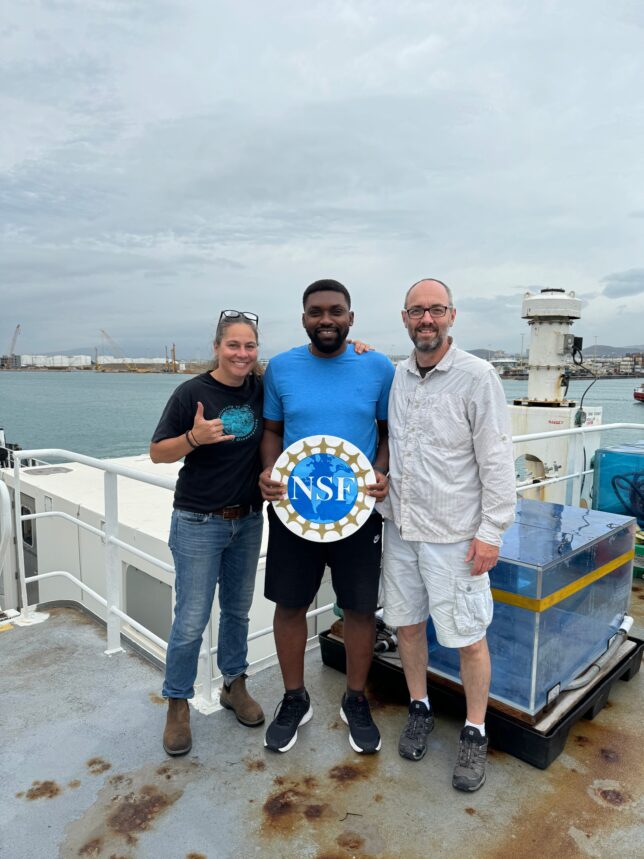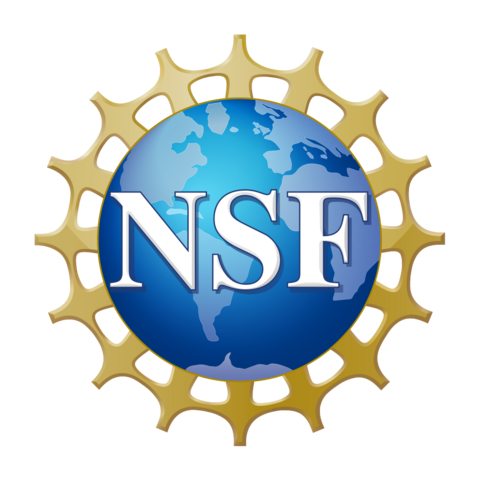Out on the vast North Pacific Ocean! Having embarked on what turned out to be a transformative journey aboard the R/V Kilo Moana and inspired by the rhythmic sway of the ocean waves, it complements my thoughts, narrating a 5-day adventure that blends science, teamwork, and the awe-inspiring beauty of oceanography research.

Over the last six years of my advanced oceanographic research, I have predominantly experienced the ocean through course labs, classroom lectures, textbooks, and published manuscripts, and I used this understanding to interpret oceanographic data analysis. Meaning, that I don’t really have much hands-on experience in the direct collection, sampling, and analysis of oceanographic data. This detachment from the field aspect always left a void, a gap in my connection with the ocean. Therefore, the opportunity to be physically present on this training cruise, participating directly in seawater collection and analysis, has been profoundly eye-opening.

Our expedition took off from the Honolulu Harbor Pier 35 early in the morning, under a bright sky and calm blue sea. My primary interest on the cruise was inorganic carbonate chemistry (DIC, TA, pH, and pCO2) and dissolved oxygen, so I worked closely with Assistant Professor Dr. Mariana Bernardi Bif from the University of Miami and Dr Katelyn Schockman, a Postdoc at the University of Miami/NOAA AOML in the Chemical Oceanography group.

Being in charge of seawater dissolved oxygen sampling and analysis, I quickly had to grasp the Winkler titration method, a critical technique for measuring dissolved oxygen, a tracer and key ocean variable that is paramount in understanding ocean health and biogeochemical cycles. The learning curve was steep, but thrilling, guided by Dr. Mariana Bernardi Bif and Daniel Sadler, a seasoned Research Specialist from the University of Hawai’i at Manoa. Their expertise and enthusiasm in teaching me made the methodology accessible, fun, and engaging.
There was genuine camaraderie amongst fellow scientists. Indeed, here, science is a team sport, and each member’s contribution is vital and valuable. The collaborative spirit not only enhanced safety onboard but also made the work significantly more enjoyable and efficient. Through this shared effort, from deploying Niskin bottles, sediment traps, incubator arrays, etc to collecting seawater samples, and meticulously analyzing the sample, I have come to once again appreciate the efforts, and sacrifices of the sea-going oceanographers. Their dedication ensures that researchers on land (modelers, ocean data scientists) have access to high-resolution, quality-assured data.
The cuisine on board was top-notch. The meals brought everyone together, providing comfort and a space for sharing interesting stories and experiences from oceans and seas across the world. Kudos to the galley crew (Rah Hugee, Dennis Ramos, and Samuel Virgen).
The safety protocols routine and daily briefings and reports ensured that amidst the rush of scientific exploration, everyone’s well-being was prioritized. This integration of safety and scientific rigor was a testament to the meticulous planning that underpinned this successful expedition.

In conclusion, this whole mission wouldn’t have been possible without the exceptional leadership of Chief Scientist Professor Angelicque White and co-Chief Scientist Professor Matthew Church, whose visionary proposal made all these happen. The training experience has been nothing short of inspirational. Thanks to the National Science Foundation for sponsoring this UNOLS Early Career Chief Scientist Training Cruise.


